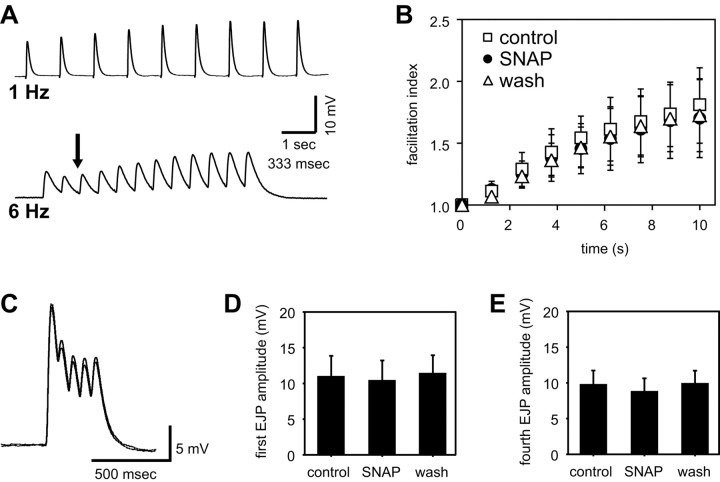Figure 9.
NO does not affect facilitation, summation, or depression at the cardiac neuromuscular synapse. EJPs were elicited in cardiac muscle fibers of a deganglionated heart by stimulating the motor nerves with a suction electrode. A, EJPs evoked by 1 or 6 Hz stimulation (0.5 msec pulses), as marked, showing facilitation at 1 Hz and a combination of depression (arrow), summation, and facilitation at 6 Hz. B, Facilitation index (the ratio of the nth EJP amplitude to the first EJP amplitude) for muscle fibers stimulated every 3 min with a train of nine pulses (interpulse interval, 1.25 sec) during a control period (squares), after a 15 min exposure to 10–5 m SNAP (circles), and after washout of the SNAP (n = 3 preparations). C, Overlaid recordings of EJP bursts (average of 10 individual traces each) in control (inner envelope) and SNAP (outer envelope), produced by stimuli consisting of five pulses/burst at an interpulse interval of 70 msec and an interburst interval of 1.25 sec. Quantifying the first (D) and fourth (E) EJP amplitudes obtained from experiments like those in C (n = four animals) shows that NO does not significantly change either EJP amplitude directly (first EJP) or the combined effects of depression and summation in the burst (the value of the peak of the fourth EJP relative to resting muscle membrane potential).

